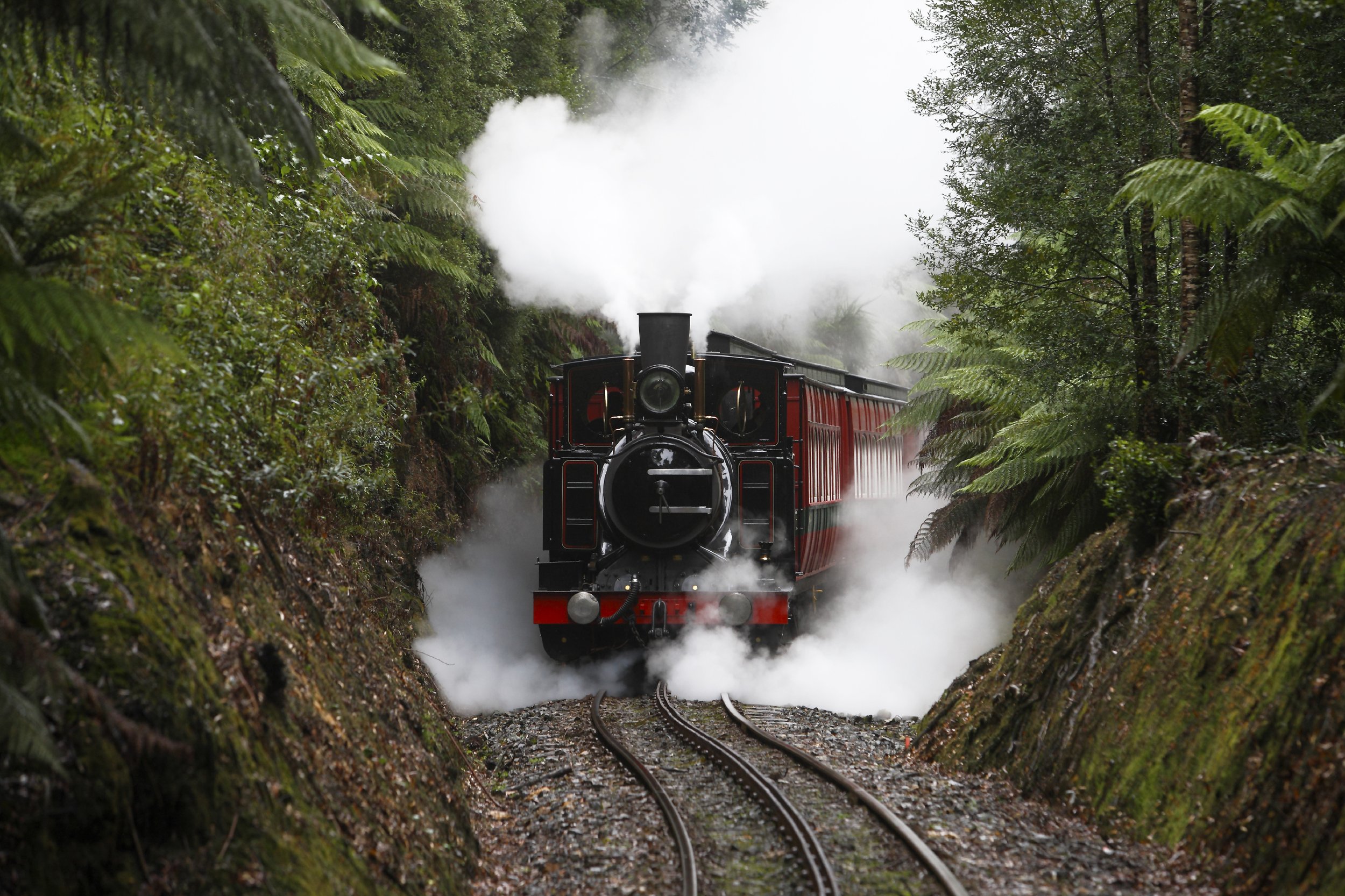
Queenstown things to do
Queenstown Shopping
Queenstown is home to a sizeable shopping district where you’ll find a news agency, pharmacy and post office. You can pick up self-catering supplies at Evans IGA or Green’s General Store while locally made handicrafts and unique finds are available at Queenstown Gifts & Souvenirs. If you’re after fresh flowers, head to Mountain Blooms or browse the botanical soaps and candles for sale at Lianlee. Queenstown is also home to a Vinnies that’s packed with pre-loved treasures and vintage finds.
Queenstown Cafes and Dining
For breakfast, lunch or dinner, you’ll find plenty of places to eat in Queenstown, no matter what kind of food you are craving. Cafe 520, Cafe Serenade and JJ’s Cafe have you covered for coffee and casual eats while the Rusty Iron Restaurant serves up Thai and Chinese fare. Traditional pub meals can be enjoyed at the Empire Hotel or you can settle in for dinner and a movie at the historic Paragon Theatre.
At the West Coast Wilderness Railway Station is Tracks Cafe, which is a great option for sandwiches, soups and burgers. For something more upmarket, head to Smelters Restaurant at the Silver Hills Motel, which specialises in modern contemporary Australian cuisine. Bistro-style meals are available at Maloney’s Restaurant, which also has an appetising kids menu.
Eric Thomas Galley Museum
Occupying the late-19th-century Imperial Hotel is the Eric Thomas Galley Museum, which brings to life the history of Tasmania’s West Coast. Many of the photographs on display were collected by Eric Thomas, who was also responsible for establishing the museum. In addition to mining images, there are vintage cameras, theatre projectors and household items, as well as gems and minerals uncovered in the region. Particularly interesting is the material relating to the 1912 North Mount Lyell disaster, which killed 42 miners.
Ironblow Lookout
Perched atop Gormonston Hill is this famous lookout, which offers a bird’s eye view of an open-cut mine. See the stains of mineral deposits streaking the pit walls and learn how over-mining and copper smelting devastated the surrounding landscape. It was at the Ironblow that gold was discovered back in 1883, with miners descending to discover profitable copper sources before stripping the land bare.
Underground Mine Tour
Ever wanted to experience what life was like during one of Australia’s early gold rushes? Join one of the knowledgeable guides from RoamWild to explore one of Queenstown’s underground mines. During the experience, you’ll see first hand the working conditions of the miners and can even try your hand at chipping copper ore. Tours also visit the early settlement of Lynchford where you can discover historic mine relics hidden in the surrounding forest.
Heritage Buildings
Queenstown was established during the late-19th-century mining boom and many of the buildings that line its main street date from the Victorian era. Highlights include the Art Deco-style Paragon Theatre and the 1896 Post Office, as well as the grand Empire Hotel with its beautifully crafted blackwood staircase.
West Coast Wilderness Railway
Experience the majestic wilderness of Tasmania aboard the West Coast Wilderness Railway, which connects Queenstown to the harbour-side town of Strahan. While being pulled by a historic steam engine, you’ll learn about the region’s mining past, then have time to stroll the waterfront of Strahan. Before or after your journey, take time to browse the historic railway artefacts on display at the West Coast Wilderness Railway Museum.
Strahan
Strahan is a charming harbour village that serves as a gateway to Franklin-Gordon Wild Rivers National Park. Overlooking the shores of Macquarie Harbour, it’s a base for cruises along the spellbinding Gordon River and is on the doorstep of Sarah Island’s historic penal settlement. A short drive from the village takes you to majestic Ocean Beach and the towering Henty Dunes. Don’t miss the opportunity to see Australia’s longest-running play, “The Ship That Never Was”, which details a convict attempt to hijack the “Frederick” brig.
Walks near Queenstown
Surrounding Queenstown are several walks that allow you to appreciate the natural beauty of the Tasmanian Wilderness World Heritage Area and the region’s mining past.
Franklin River Nature Trail
Distance: 1 km | Time: 25 minutes
One of the best-known walks in the Tasmanian Wilderness World Heritage Area, this short trek takes you through a magnificent cool temperate rainforest to the banks of the Franklin River. In the parking area are picnic tables and toilets. Parks Tasmania fees apply.
Donaghy’s Hill Lookout
Distance: 2.2 km | Time: 40 minutes
Traversing a thick fern forest, this easy walk steadily climbs Donaghy’s Hill before opening out at an impressive lookout. It offers expansive views towards the peak of Frenchman’s Cap while the Franklin and Collingwood rivers snake their way through the forest below. Parks Tasmania fees apply.
Nelson Falls
Distance: 1.4 km | Time: 20 minutes
This 20-minute walk is a great opportunity to stretch your legs on the drive between Derwent Park and Queenstown. The majority of the trail is along a boardwalk that leads through a forest of sassafras, myrtle and ferns before arriving at the spectacular Nelson Falls. Public toilets are available in the parking area and Parks Tasmania fees apply.
Horsetail Falls
Distance: 1 km | Time: 30 minutes
This short trail winds its way along the foot of Mount Owen to Horsetail Falls, with some steps and a small incline along the way. It offers impressive views across the scarred hillsides of Queenstown and the waterfall is particularly photogenic after heavy rainfall.
Spion Kop Lookout
Distance: 300 metres | Time: 15 minutes
For 360-degree views across Queenstown, make the short but steep climb up to the Spion Kop Lookout, which is named after a Boer War battle. The route is dotted with information panels detailing the mining heritage of the region and a signboard at the top explains some of the key landmarks that are visible.
